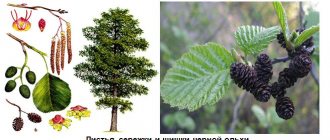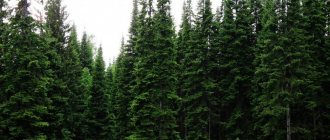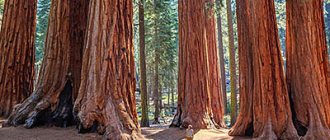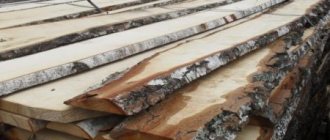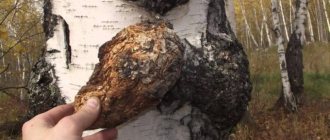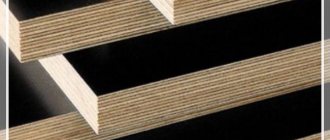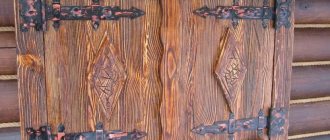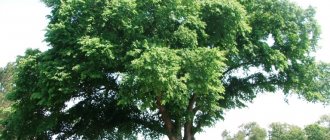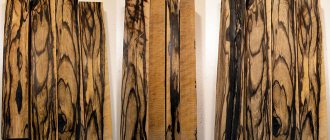The description of the birch is known to everyone living from the subtropics to the tundra. This tree is not only widespread, but also has more than 120 species, many of which are successfully used in the chemical industry and furniture production. Its white trunk with black markings has made this curly-haired beauty one of the country's most recognizable symbols. It is difficult to imagine the forests of the middle zone without birch; the species is also actively used in landscaping cities: parks, squares, alleys. These trees are also actively grown on personal plots, capable of decorating any landscape, adding a characteristic color to it.
Description of the species
The Latin name for birch - Betula - comes from the Gaulish language, and the Russian name comes from the Proto-Slavic Berza - to turn white, to glow. This numerous genus of deciduous trees is considered the most numerous throughout the Northern Hemisphere. There are more than a hundred species of trees in the Birch family.
Birch has important ritual, everyday and historical significance for Slavic, Scandinavian and Finno-Ugric culture.
The biological description of the tree is as follows:
- Height - for most species it ranges from 30-45 m. There are also dwarf varieties, creeping ones, and shrubs.
- The girth of a birch trunk is 1.2-1.5 m.
- The root system is either buried, slanting deep into the soil, or superficial, this is influenced by the specific type of tree and its growing conditions. The roots are usually powerful and branched.
- The bark is most often white, but may have a yellowish, brown, or pink tint. There are species with gray, brown, almost black bark. The outer layer of bark peels off easily, and the bottom of the trunk of old trees is covered with a dark crust, riddled with deep cracks. Young shoots are most often red-brown with numerous small growths.
- The leaves are small, smooth, triangular-ovate with serrated edges. They reach 7 cm in length and 4 cm in width. The color is bright green, before falling the shade changes to rich yellow. Young foliage is sticky.
- Birch inflorescences (catkin-shaped thyrsuses) are complex, consisting of male and female flowers. Male ones grow at the ends of long shoots, female ones - on short ones. The flowering period is from March to June, depending on the climate and species. After pollination, male flowers fall from the birch tree.
- Birch fruits are nuts with thin membranous wings, slightly flattened. The seeds are light and easily carried by gusts of wind over a distance of up to 100 m.
The lifespan of trees is usually about 100-300 years. Some species can live longer.
Features of the tree
Birch is easily recognized by its light bark with black markings, but not all varieties from this family have this feature. The root system can also vary greatly. In tree forms it is large and massive, going deep into the ground. Branched roots lying on the surface of the ground are characteristic of artisanal species.
The shades of the bark vary from light, almost white, to red and brown. The foliage varies in size and color, but most species have small serrations at the ends of the leaves. Their average width is about 5 centimeters, the surface is even and smooth. With the arrival of spring, the branches are covered with sticky leaves. With the arrival of autumn, they turn yellow and crumble.
The tree blooms with catkins covered with pollen.
Birch is very important to the forest or planting ecosystem. It is home to many types of insects, including caterpillars. Also, many types of useful mushrooms grow near its trunk: boletus, russula, milk mushroom, porcini mushroom and others. Representatives of this family are distributed not only in Russia and neighboring countries. They can be found in Europe, Asia and North America.
All types are divided into two large groups.
- Trees whose height varies from 20-30 to 50 meters. The diameter of the trunk can reach up to one and a half meters.
- Shrubs have more compact dimensions.
Don't forget about the industrial sector.
- Birch is famous for its beautiful and strong wood. Due to its high strength, it is used for the manufacture of plywood, furniture and finishing materials.
- Tar has found its application in cosmetology and medicine. The substance is obtained from wood using dry distillation.
- By processing the leaves you can get a natural yellow dye.
- During flowering, birch trees attract many bees. Pollen-bearing plants are important for honey production.
- The top layer of bark, called birch bark, is often used as a flammable substance. It also found its use in handicrafts.
- Birch sap is good for health and is also the main component for making syrups and decoctions. Beekeepers often feed bees with it.
- Birch leaves, buds and branches have found their use in medicine. They are used to make bactericidal, diuretic and other agents.
Birch varieties
The birch genus has 119 species. White birch, also known as common birch (Betula Alba), is the most common representative of the genus throughout European territory; these include two species:
- Betula Pendula – also known as weeping birch, warty birch, drooping birch, silver birch, and European white birch. The height of the tree is up to 30 m, the bark is initially brown, but after 10 years of life it turns white. The branches are abundantly covered with small growths, hence the name “warty”. The shoots characteristically sag. This species is frost-resistant, tolerates drought, but is very light-loving.
- Betula Pubescens – downy (curly), pubescent birch. It grows up to 25 m, young trees have red-brown bark, becoming snow-white over time. The branches grow upward, making the crown spreading and wide. This species grows well in marshy soils and tolerates frost and lack of sun.
Today, they try to avoid the name white birch to avoid confusion.
This type also includes:
- Flat-leaved birch (Japanese white, Asian) - grows in Siberia, in temperate and cold Asian regions (China, Japan, Korea). Widely used in landscaping cities and gardens. The most famous varieties of this birch are Fargo, Whitespire, Szechuanica.
- American white birch (paper, canoy) - grows naturally in the USA and Canada, and is successfully cultivated in Europe. The tree is unpretentious and can grow in both damp and dry regions. The wood that has a reddish tint and is easily polished is valuable. Popular varieties are Vancouver, Renaissane Reflection, St. Gerge.
The following types deserve special attention:
- Red birch (cherry, sweet, viscous) - common in North America, distinguished by red-brown or almost black bark. It grows up to 25 m, the crown is initially pyramidal, over time it becomes spherical with sagging branches. The bark is cherry-colored with pronounced cracks. Winter hardiness is average, the variety is suitable for growing in warm regions.
- Erman birch (stone) is a low tree up to 15 m, mainly growing in the Far East. The trunk is twisted, the bark is dark, and over time it cracks badly. This species is unpretentious and has a very long lifespan (up to 400 years).
- Black birch is a heat-loving plant, growing up to 30 m, with a thick trunk. It is distinguished by its openwork crown and oval-shaped leaves.
- Dwarf - grows in the tundra, mountainous areas, and looks like a branched shrub.
- Karelian is a tree up to 8 m high, often resembling a tall bush. Prized for its wood.
Canadian and Himalayan birches have the most snow-white bark. This is due to the need to reflect a large amount of ultraviolet radiation.
Almost all species are highly frost-resistant, with the exception of varieties whose homeland is the southern regions.
Wood
White birch has strong, dense, light-colored wood with a slight pink or yellowish tint. The pattern on it is weakly expressed, wavy, the growth rings are almost not visible, and reddish, chaotically scattered spots are characteristic. One of the most beautiful woods is the Karelian birch - a low plant that has a highly deformed trunk in the form of spherical swellings and tubercles.
Previously, the Karelian birch was considered a separate species, but now biologists have come to the conclusion that it is a warty (silver) birch, the trunk of which is deformed under certain conditions. That’s why the life of the tree is short: the Karelian birch lives for about forty years (some species live up to one hundred and eighty), and therefore does not have time to grow, and its height is about twenty-five meters.
The Karelian birch became famous for its marble-like texture and color: brown spots on a golden background (due to its properties, expensive products have long been made from it: furniture, decorative items, souvenirs). Scientists have not yet come to a common opinion about the reasons for the appearance of such an amazing pattern. Among the main assumptions why Karelian birch has patterned wood, the following versions are put forward:
- violation of mineral nutrition;
- viral infection;
- hereditary disease.
Despite the fact that when crossing two plants of this species, the Karelian birch passes on its amazing structure by inheritance, the decorative characteristics are not always completely transferred, and it is possible to determine whether the wood will have a pattern no earlier than after five years.
Karelian birch is also of particular value because it is very rare, and therefore its cost exceeds 1.5 thousand dollars, and is sold not by cubic meters, but by weight, in kilograms.
Spreading
Birch is one of the most important forest-forming species, which determines the landscape of most of Eurasia and North America. This tree grows even beyond the Arctic Circle, and also forms the upper limit of mountain forests. Some species are even found in Africa and Southeast Asia.
Trees are not particularly picky about soil composition and moisture levels. Birch can be found on the banks of seas and rivers, swamps, dry steppes, and rocky slopes. The tree is demanding only in terms of illumination, although some species can easily tolerate shade.
Planting and care
Growing these trees in a garden plot is not always justified. They depress nearby plantings and greatly dry out the soil. It is important to ensure that the roots of the birch are as far as possible from fruit trees and shrubs. It is also important to provide the tree with timely watering and fertilizing to minimize the risks of soil depletion.
When planting, you should follow a number of rules:
- Young birch trees should be planted in the ground in early spring; it is believed that this will minimize stress for the seedling. You can also start planting in the fall, in this case you need to take care of the presence of a good earthen ball, and the age of the seedling should not exceed 3 years. Planting older trees is possible even in winter, when the earthen ball is frozen.
- It is best to compose a soil mixture with an eye to the natural composition of the soil in the natural habitat of a particular species. But most birches are unpretentious and will take root in any soil. Acidity can also fluctuate greatly. The soil mixture is made up of earth, sand and peat (2:2:1); it is also worth providing a drainage layer about 15 cm thick.
- The planting hole should be of such depth that the earthen ball fits completely. The seedling should be covered with soil just above the level of the root collar. Severe deepening of the roots will lead to a decrease in the growth rate or even death of the seedling, since the mycorrhizal fungus that lives on the roots, which is necessary for growth, will die.
- When planting in groups, maintain a distance of 3-4 m between trees.
- When planting, as well as for several days after it, you need to water the seedlings abundantly.
Growth at an early stage is slow, but when the tree reaches four years of age it noticeably accelerates. On average, a tree grows 1 m per year.
Minimal care is required for trees of this type. In summer, it is enough to water the seedlings in a timely manner to prevent the tree trunk circle from drying out. You should also carefully loosen the soil, going deeper by about 3-5 cm, so as not to damage the root. If necessary, the tree trunk circle is mulched (a layer of sawdust, peat, compost - about 10 cm).
At the beginning of spring, while the leaves have not yet appeared on the branches, you can apply fertilizer. For this, a mixture of manure (1 kg), ammonium nitrate (15 g), urea (10 g) in a bucket of water is suitable. Repeated application of fertilizers is possible at the end of spring.
The older the tree, the more fertilizer it will need. Birch trees 10-20 years old are watered with 30 liters of nutrient solution; older trees will need 50 liters.
You should also take care to protect the seedlings from gusts of wind; to do this, it is enough to tie the trunk to a peg for the first six months after transplantation.
Crown pruning is not used for birch, so as not to disturb its structure; the tree will look worse. It is enough to remove dry or damaged shoots in the spring.
Reviews from gardeners
Newratka 18, Moscow
We water regularly, abundantly, but the birches drink their own and others’. Everything that is planted within a radius of 5 meters from the trunks is significantly lower than its counterparts growing in other conditions.
Sirina, Tyumen
For a long time I wanted to plant a birch tree in my dacha. I really love this tree. Finally, the fall before last I planted a very tiny one (so that it would take root better). Summer has stood still, but next year, I think, my beauty will begin to grow.
Reproduction
Birch is one of those rare tree species that reproduce well by self-sowing. Seeds can be planted in spring or autumn. In the first case, the period of seed stratification should be about 2 months at a temperature of 0 ... +5 ° C. Autumn planting is carried out without stratification.
When storing seeds, their germination rate is greatly reduced.
Birch is practically not propagated vegetatively (by cuttings), since the survival rate is very low (about 10%).
Diseases and pests
Among the pests, trees of this species are particularly dangerous:
- Silkworm caterpillars eat the leaves, leaving only the veins. The caterpillars should be shaken off, and then the tree should be treated with an insecticide.
- May beetle, larvae - eats roots. Digging up the roots will help to eliminate all the larvae.
- The chimney beetle harms leaves and young branches. The affected parts of the plant are removed and burned, after which the trunk circle is dug up and everything is treated with an insecticide.
Birch often develops fungal diseases, for example, wood-destroying tinder fungi. The growths must be removed in a timely manner, and then the treated areas must be sprayed with fungicides.
Meaning and Application
The properties of birch have been known since ancient times. The buds and leaves are used for medicinal purposes as a diuretic and disinfectant. Birch sap, especially collected in early spring, is considered a good preventative against diseases of the circulatory system. Chaga mushrooms growing on trunks serve as an excellent remedy against headaches; tea made from them perfectly tones and helps restore strength.
Birch tar is now actively used in the manufacture of cosmetics, and previously it served as a lubricant for cart wheels.
Firewood and brooms are harvested from birch. Wood is widely used in the chemical industry. Wood is actively used in furniture production. Wood makes light, durable, beautiful products, all kinds of household items, and crafts.
Life expectancy over 100 years
Birch is actively used for economic activities and medicinal purposes.
Photo: stihi.ru Description:
- Birch - (lat. Betula) is a deciduous plant belonging to the dicotyledonous class. It takes its name from the ancient Gaulish language.
- The lifespan of the plant is approximately 100 - 300 years (rarely 400 years) . The age of the plant is influenced by the characteristics of the variety and external factors.
- The maximum height of the tree is 45 m . The trunk diameter can reach 1.5 m.
- The root system can be : superficial, with numerous thin processes, branched or deep. It depends on the conditions in which the tree grows.
Birch got its name from the ancient Slavic goddess Beregani
The author of the story shares his experience of growing birch trees on the site. Recommends the use of trees in landscape design:
Use in landscape design
Birch is also widely used in landscaping cities and gardens. The trees look great in group and single plantings and form harmonious combinations with other deciduous trees (maple, alder, rowan, willow, bird cherry). The tree is unpretentious and easily tolerates the gas pollution and dust of large cities. Often birch alleys serve as protective strips along busy roads.
Birch is a deciduous tree. When planting alone, you will need to regularly clear the surrounding area of fallen leaves.
The high decorative value of birch is due to its lush openwork crown, contrasting color of the bark, and bright foliage that changes color throughout the year. Dwarf or low-growing species fit perfectly into the landscape of garden plots, when designing Japanese gardens and rock gardens.
Growing birch as a garden decoration is not a difficult task. And among the many varieties of these trees, you can always find exactly the one that is optimally suited to the climate, terrain and preferences of the owner of the site.

